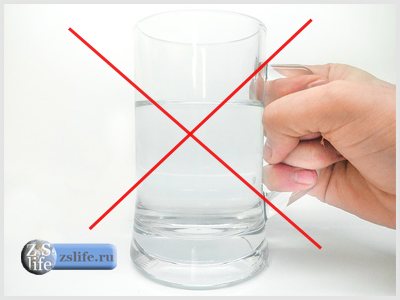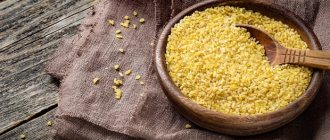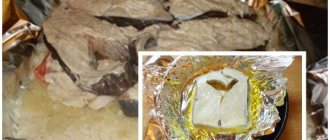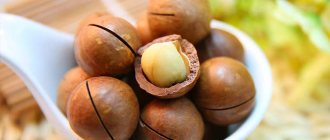Hello, friends.
Today I will introduce you to a super powerful healing tool. Of course, you want to become even healthier, get rid of diseases that could not be overcome in other ways, rejuvenate, cleanse yourself of toxins, get rid of excess weight and acquire many other bonuses.
Then get acquainted: dry fasting for 36 hours, the enormous benefits of which have been noted by hundreds of people around the world. Why exactly dry and why 36 hours you will find out later.
There is a lot of information about the benefits of fasting, both in print and on the Internet. There you can also read reviews of people who practiced abstinence from food to heal illnesses, improve health, and achieve longevity. After familiarizing yourself with the features and results of the procedure, you will definitely want to try the technique on yourself in order to improve your health and improve your overall well-being. The effectiveness of dry fasting has been scientifically proven by the Research Institute of Pulmonology in St. Petersburg and is recognized by official medicine in some countries as a full-fledged method of treating and preventing diseases.
General information
Those who promote fasting as a way to effectively improve their health often talk about its benefits. The benefit of dry fasting is that it is one of the methods for treating a variety of diseases.
Answering the question of what dry fasting is, it should be noted that the history of this technique goes back very deeply. Its essence is that a person goes completely without food and water for a certain period of time. Proponents of this technique argue that with its help it is possible to provide treatment for diseases, the spectrum of which is very wide. But still, despite the many arguments in favor of this technique, it is very important to understand that dry fasting, even one day, is a very serious stress for the body. Therefore, it can be practiced only in the absence of contraindications and with strict adherence to a number of important rules. How the preparation is carried out, the benefits and harms of this method, and how to properly practice it at home will be discussed in the article below.
The benefits and harms of dry fasting from a medical point of view

Those who want to lose weight often have no idea what dry fasting is, although they have heard about such a system. It represents a complete refusal of food and water for a certain time. During this period, which can be, for example, 36 hours, they do not eat anything or drink even clean water.
There is also a diet option that is especially difficult to follow, in which any contact with moisture is excluded - the person not only does not drink, but also does not take a shower, does not carry out hygiene procedures, including washing, and does not go out in the rain. Such strict rules may seem impracticable, but in reality it is not so difficult if you approach fasting correctly.
According to medical research, complete abstinence from food and drink for a short period of time brings certain benefits to the body. In some cases, it turns out to be necessary to use this nutritional system to treat any disease.
The diet is based on the fact that inflammation occurring inside the body requires sufficient water to develop. Swelling of the problem area occurs, and various bacteria and viruses begin to multiply in a humid environment. With a lack of moisture, harmful microorganisms quickly die. This helps to eliminate the disease as quickly as possible.
Dry therapeutic fasting can bring the following benefits:
- Help in getting rid of various inflammatory processes occurring in the body. During the period when restrictions are observed, problems may begin due to lack of fluid. When dehydration occurs, body cells and harmful microorganisms begin to fight for remaining moisture. As a result of using the treatment system, victory goes to the cells, and harmful microorganisms and bacteria are deprived of moisture and die.
- Albumin is degraded, its amino acids are distributed throughout the body, which helps to fully satisfy immediate needs. First, the brain cells and the cardiovascular system are saturated. Many hormones are released into the blood. This completely eliminates inflammation that may occur in the body at this time.
- Metabolism is significantly accelerated. The result of this is an improvement in metabolism, the destruction of harmful bacteria, viruses and toxins that can provoke disease.
- The blood is purified and its composition is improved. All harmful and unnecessary substances that enter the body along with food and water during normal nutrition are released.
- The consumption of proteins from internal reserves begins. This gradually leads to the breakdown of diseased tissues, swelling and adhesions, neoplasms, and plaques inside the vessels.
- Fasting without water makes it easier to cope with boils and suppurations, and get rid of colds and infections. With the help of this diet, the condition improves with concussions and injuries, inflammatory processes in the periosteum and inner ear.
It is worth noting that fasting without food and water is a rather harsh measure, which may not have the best effect on your health. Dry fasting should not be carried out for longer than 3 days. If there is a need for long-term fasting treatment, you need to consult a doctor to develop a regimen. You should not try dry fasting on your own, even if you have previously achieved positive results. The entire period of the diet should be carried out under the supervision of a specialist.
Be sure to read: Diet sweets for weight loss
Types of dry hunger
It is customary to divide dry fasting into several subtypes. First of all, there is a distinction between soft and hard fasting. During mild (partial) hunger, it is allowed to maintain hygiene - take a shower and bath, brush your teeth, and wash your face. You can also rinse your mouth. In this case, water should never be swallowed, so as not to violate the rules of this method.
In case of severe (complete) hunger, any contact with water is prohibited - you cannot wash your face, brush your teeth, or, moreover, take a shower. That is, the point is that the body does not come into contact with water at all.
For any type of dry hunger, enemas are not performed.
From the point of view of the duration of this process, one-day fasting and hunger lasting several days are distinguished. Of course, those who are going to go without food and water for the first time should start with one day of fasting. People who already have some experience in this field can fast without water for 3 days. Even more experienced people manage to fast for 7 days and even 11 days. But under no circumstances should such experiments be carried out at home without the supervision of a doctor - this is dangerous to health and life.
With 7 or 11 days of fasting, sometimes not absolute, but cascade fasting is practiced, when periods of complete abstinence from food alternate with “non-fasting” days.
But in any case, the main rule is this: three-day fasting and fasting for more days cannot be practiced without the supervision of a doctor.
By the way, according to the Guinness Book of Records, the longest dry fast in the world lasted 18 days. However, there is evidence of a longer period without food and water. For example, there is evidence that the yoga master Swami Sat Marga fasted without water for 21 days.
What is special about the dry method?
You've certainly heard about regular water fasting, but you probably haven't heard about dry abstinence.
Because in dietary and therapeutic nutrition, “wet” fasting is more often used, which consists of abstaining from eating, while being allowed to drink water.
This technique also involves removing excess fluid from the body along with toxins using additional methods: sauna, bathhouse, hydrocolonoscopy, cleansing enemas. During dry (absolute) fasting, a person refuses both food and water.
You think this is unusual, impossible, and you say why refuse not only food, but also water.

But this feature makes the technique tens of times more effective .
With a dry refusal to eat, the same stages of change in the internal environment occur as with the exclusion of only foods from the diet.
- Stage of food arousal.
- Stage of increasing ketoacidosis (acidification of the internal environment).
- Stage of ketoacidotic crisis.
But with dry fasting, these stages develop 2 times faster than with simple refusal of food. Accordingly, therapeutic effects occur faster, which has a beneficial effect on health after the end of the procedure.
Changes in the body after giving up nutrients and fluids are more natural and physiological for a person, and also easier to tolerate, no matter how strange it may sound. If you have a choice between two methods, I recommend that you choose the dry one.
I myself have repeatedly fasted both with and without water, and I’ll be honest that without water, fasting is much easier to bear. And I felt much more healing and energy-boosting effects.
But it is imperative to take into account the state of health, the exacerbation of some chronic diseases, especially the heart and liver. We will talk about indications and contraindications later.
What happens to the body?
Therapeutic fasting, when a patient spends a certain time without food and water, began to be used in medical practice in the nineties of the last century. It is generally accepted that it is more effective for the body compared to regular fasting.
During the period of abstinence from food and water, the body is in a state of severe conditions compared to “normal” hunger. As a result, from his reserves he is forced to use not only the fat layer, but also water. As a result, with a lack of water, foreign microorganisms are actively destroyed and pathological processes are suspended. It is believed that dry fasting can get rid of inflammation.
During abstinence from food, in order to maintain vital functions, the body consumes not only fat, but also proteins. First of all, proteins from altered tissues are consumed - adhesions, tumors, edema, atherosclerotic plaques. As a result, if you abstain from food and water, you can get rid of suppuration, infections, boils, inflammation, etc.
This effect is also observed during normal hunger, but during dry hunger it occurs much faster.
Thus, dry fasting is effective in the following cases:
- with inflammation of an infectious nature;
- in case of trophic ulcers;
- for rheumatoid arthritis , osteochondrosis, polyarthritis , etc.;
- for various benign tumors;
- in case of gastrointestinal diseases;
- for skin diseases.
Those who have assessed the results of proper dry fasting in practice note that after this period many positive changes occur in a person: the complexion and teeth improve, lightness appears, and diseases disappear.
It is noted that dry fasting, which lasts up to 3 days, does not lead to too much dehydration of the body, so it is relatively easy to tolerate.
At the same time, many experts who at one time studied the effect of hunger on the body in theory and practice note that dry abstinence from food for three days is comparable in its therapeutic effect to a 7-9-day regular fast with water consumption.
At one time, scientists conducted experiments during which it was confirmed that absolute hunger without water and food has a positive effect on the condition of the body in case of tumors and severe immunodeficiencies .
It is also important that long-term dry fasting is a spiritual practice, when not only weight loss occurs, but also a rethinking of life values and purification of thoughts.
Thus, in the absence of food and water, the following changes occur in the body:
- inflammatory processes occur;
- stimulation of immunity ;
- weight stabilizes, the person loses weight;
- the effect of rejuvenation appears;
- prevention of the development of tumors and other serious diseases is noted;
- there is a surge of energy, lightness appears.
Negative consequences
After a person has done dry fasting one or more times, in some cases he may have negative consequences:
- dizziness;
- dry skin and the appearance of cracks on it;
- deterioration in performance and sleep disturbances;
- fragility of blood vessels;
- dehydration;
- severe stress on the psyche.
Such symptoms most often appear if a person enters and exits hunger incorrectly and violates the rules that are important to follow during the period of immediate refusal of food.
Anti-inflammatory and immunostimulating effect
Even after 36 hours of fasting, permanent changes in the body develop. First of all, the immune system is activated. In conditions of refusal to take water and food, endogenous fluid is used for metabolic processes. This helps to increase the concentration of biologically active substances and immune cells:
- histamine;
- serotonin;
- adrenaline;
- interferon;
- T cells;
- lymphocytes;
- humoral factors of immune defense.
Increased immune activity prevents external unfavorable factors from causing the development of the disease. Pathogenic bacteria, viruses, fungi, parasites, when entering the body, are destroyed by immunocompetent cells and eliminated through the urinary or digestive system without harmful effects on health.
Therapeutic dry fasting helps the internal reserves inherent in nature to resist infections and other diseases. In most cases, modern people have lost the ability to independently cope with illness through the body’s own defenses. In the era of antibiotics and other medicinal substances, harmful artificial foods, and poor environmental conditions, internal reserves are in a dormant state. This is why modern people get sick so often.
Inflammatory processes cannot develop in the absence of fluid. The area of inflammation attracts water from the surrounding tissues, swells and swells. Pathogenic microorganisms multiply and grow in water; toxins and waste products of bacteria or viruses spread throughout the body through the liquid. Elimination of both food and liquid from the diet prevents the infection from having a harmful effect on health. Without fluid, bacteria, viruses, fungi or parasites quickly die.
How to fast?
If a person plans to fast without water for 24 hours, then he will not need long preparation for this period. The day before fasting should be spent eating vegetables and fruits, trying not to overeat. It is recommended on this day to eat the “Pastelka” salad, which contains grated cabbage, carrots and beets.
Proper preparation for a longer fast is carried out over about a week. During this period, it is necessary to completely exclude fatty, fried foods, alcohol, coffee, sweets, and meat dishes from the diet. Food should be as light as possible. 3 days before the start of the process, you need to switch to a plant-based diet and drink a lot of clean water these days.
Directly on the day of hunger, it is recommended to do something to distract yourself from thoughts about food. Diaries of starving people confirm that in the absence of interesting activities, it is more difficult for a person to endure hunger due to constant thoughts about food. Ideally, this time should be spent in nature.
On the day of hunger, it is not recommended to cook food, so as not to expose yourself to additional temptation. You cannot take any medications on this day.
To make fasting a habit, some experts recommend doing it once a week on the same day. After some time, it will become part of your personal schedule, and fasting will become much easier. After this, you can try to practice longer abstinence from food.
It is recommended to practice dry fasting according to the following schedule:
- one-day – once a week;
- three-day – once a month;
- five days - once a quarter;
- eleven-day – once or twice a year.
ONE-DAY DRY FASTING, rules (36 hours)
Schedule of events at the Anna Yakuba School of Dry Fasting and Raw Food Diet “Dream”:
For questions regarding participation in the School’s programs, please contact Anna Yakuba: e-mail
RULES FOR CONDUCTING A ONE-DAY FASTING (36 hours) (chapter from Anna Yakuba’s book “The School of Healing Fasting and Raw Food Diet”).
CHAPTER 6. RULES FOR A ONE-DAY FASTING (36 hours).
The best day is today" Paul Bragg
Try fasting for one day and you will see that there is nothing more effective, safer and simpler than short periods of fasting. A one-day or 36-hour fast begins after the last water intake, continues throughout the next day and ends with the next day's water intake. For example, if you choose Friday as your fasting day, your last drink of water will be on Thursday evening, and your first drink after fasting will be on Saturday morning. That is, when I say “one-day fast,” I mean overnight + day + night, a total of 36 hours. This type of fasting is ideal to do regularly every week.
Short-term regular one-day fasting once a week and 3-day fasting once a month enhance the body’s ability to self-heal, maximally stimulate mental processes and contribute to the disclosure of spiritual potential. Even the ancients said: “Eat for six days, fast for one day.”
The correct and competent practice of fasting can radically change your spiritual life, physiological health and mental activity. I invite you to make fasting an integral part of your life, a regular procedure for caring for your spirit, mind and body, and I want to give competent, practical recommendations, repeatedly tested on yourself.
Here are some tips for successfully doing a one-day dry fast.
During the one-day abstinence from food and water, you can go about your normal activities - go to work and do everything you do every day. If you decide to fast on your day off, then it is advisable not to lie in bed or in front of the TV. Walking and light running in the fresh air, physical and mental activity, within moderate limits, will make the fasting process more effective and enjoyable.
The rhythm of life of a modern person is constantly accelerating, and the media have a huge influence on our consciousness. We have to maintain numerous social connections and perform many tasks that scatter our attention and steal our time. It is best to make your fasting day your solitude day. This is a great opportunity to devote the whole day only to yourself, your thoughts, dreams and, of course, caring for your body. A one-day fast is your opportunity to step away from routine tasks and obligations, especially those that need to replenish the refrigerator. But you can spend more time thinking, praying or meditating.
Many of us would like to make time for spiritual improvement, but the reality is that spiritual goals often end up at the bottom of our to-do list. We justify this by saying that we do not have the time and suitable conditions for this. Other issues turn out to be more urgent and pressing. Short-term fasting, spent in solitude, creates the necessary conditions for strengthening the spirit and increasing concentration. If you have a goal of spiritual improvement, you can devote more time to prayer, philosophical reflection or meditation in your daily routine.
I encourage you to write down your thoughts, ideas, goals, and accomplishments in a journal. You can develop your own course of spiritual and physical improvement for a year, five years and beyond. This will help you achieve greater results and expand your understanding of your path. A calm and quiet day, during which you take care of your soul and body, take care of yourself and your inner self, will give you long-lasting and lasting feelings of relaxation and renewal.
Try to organize your planned day in such a way that you are distracted as little as possible by phone calls or unexpected guests (ask in advance not to be disturbed by calls, visits, or simply turn off your mobile phone). A few leisurely walks in a park or forest will be extremely beneficial.
The advantage of fasting at home is that you set your own rules, create your own daily routine, and decide for yourself what is important to you. You can use the sample below as a basis, but first promise yourself that you will strictly adhere to what you planned. This kind of internal commitment will discipline you and help you achieve the greatest success in your future fasting practice.
Since this fast does not last long, there is no need to follow a “transition” diet before and after it for several days. During a 36-hour abstinence, in order to ensure an easy transition of your body from one state to another, it is enough to adhere to a diet of plant-based foods (raw food) in the days preceding and following the fast. To make it easier to endure fasting and get the maximum effect, eat in moderation and limit yourself to a small amount of food.
Ideally, you should have lunch no later than 15:00, and drink water for the last time at 18:00. It would be nice to take a walk in the fresh air (it would be better with a good friend). If at this time you usually watch TV and at the same time have a snack, it is better not to turn on the TV at all! Try to go to bed early, and if you can't fall asleep, read a good book or do anything else that usually helps you fall asleep.
Here are some more practical tips and a sample daily schedule.
On the eve of fasting, eat only fresh, raw vegetables and fruits. If possible, drink plenty of fresh juices or green smoothies. What needs to be done the day before?
1. Buy fresh fruits and vegetables for the day after fasting. It is advisable that these are local products grown in this season. Don't forget to buy a lemon.
2. If you don’t have a filter for water purification at home, stock up on clean filtered water.
3. Do not transmit, eat only light foods and limit your consumption of foods containing animal proteins (meat, fish, dairy products). It would be nice to be on a raw food diet on this day and drink freshly squeezed juices.
4. For lunch, eat only fresh raw vegetables or fruits.
5. For dinner, limit yourself to fruits only, excluding bananas and grapes. But it’s better to do without them by drinking water, freshly squeezed juice or a green smoothie.
6. At 18:00 - 21:00 you drink water and after that you don’t drink or eat anything for 36 hours.
Man is prone to give in to temptation, and the two biggest temptations during a fast occur when he sees or smells food. Therefore, on the day of fasting, try not to turn on the TV with almost continuous food advertising and not to be present during its preparation. Thoughts about water and food may haunt you throughout the day. However, if you focus on your goal and try to strictly stick to the routine you created, you will feel great. Remind yourself that your abstinence will only last for one day. But during this day you can do so many useful things for your spirit, body and mind.
Get up in the morning at your usual time, start your business and continue doing it as usual. Stay focused, focus your attention on work or whatever activity you are currently doing. It’s good to do gymnastics (breathing, stretching or any other).
Sample schedule for a fasting day
- 06.00 - gymnastics in bed.
- 06.15 - morning rule (prayer or meditation)
- 07.00 - morning walk or light jog
- 08.00 – shower
- 08.20 – breathing exercises
- 09.00 - relaxing music, prayer or meditation
- 10.00 - reading, working on the computer
- 12.00 - walk in the fresh air
- 14.00 - music, rest or sleep
- 15.00 — stretching gymnastics
- 16.00 - reading, working on the computer or watching your favorite movie
- 18.00 - walk in the fresh air
- 20.00 - diary (how the day went)
- 20.30 - prayer or meditation
- 21.00 - reading
- 22.00 - sleep
If you are at work, then at lunchtime it is better to go for a walk in the fresh air so as not to be tempted by conversations, the sight and smells of food. You may be filled with energy, but partly - negative (euphoria or irritability may appear). A walk will help you warm up and relieve nervous tension. Try not to tell anyone about your fasting, so as not to cause critical manifestations (misunderstanding, ridicule, persuasion, etc.).
When you get home, it’s good to do some household chores (but not cooking - you need to do this in advance for your loved ones). Do some housework, put your papers in order, put your desk and cabinets in order. Do gymnastics (breathing, stretching or any other). It’s better not to watch TV, but to read a good book, knit, play chess, etc.
As bedtime approaches, you may experience some emotional hunger, but it is advisable to let the feeling of impending triumph overcome it. If you're so embarrassed by thoughts about food that you're ready to stop right now, don't do it! Night time is the worst time to eat, and if you eat enough, you will negate everything that you have achieved today with such difficulty. Wait for the morning, which will come very soon. There are a few hours left before breakfast.
If you're on the verge of a breakdown, keep yourself busy. Go for a walk, taking your other half, a friend, a child or a four-legged friend with you. Research publications on the Internet about some topic that is relevant and interesting to you, for which you have not had time before. Draw your self-portrait. It may not be a masterpiece, but it will entertain you. Finally, you can clean the pots or finally organize the cabinets (just kidding!).
When you finish your usual activities, don’t forget to praise yourself for your perseverance, and then go to bed. If you can't sleep because you're hungry or have too much energy, go back to reading a good book, doing a crossword puzzle, or doing something that usually helps you relax (prayer, meditation, soft music, audiobooks, etc.).
People's reactions to the processes occurring in the body during fasting are different. You may feel tired, have a headache, or have other symptoms. You shouldn't be afraid of this. This all happens because your body is doing the work of clearing away accumulated waste, toxins and other unpleasant accumulations. Over time, all these symptoms will disappear and this day will pass easily and unnoticed for you. Or rather, on the contrary, you will notice that on this day you have much more free time, because previously at least 2-3 hours were spent on preparing and eating food.
In your journal, write about your day. Was it easier than you expected? What stimulated you the most? How did you feel before this? How do you feel now? Did you feel weak? Has your mood improved? Was there a surge of strength? Or was it really difficult? Would you like to do this again? What are your plans for the future? Write down everything that you consider important and necessary. This will definitely come in handy in the future.
The next day after fasting, drink a glass of water in the morning and 15 minutes later, a freshly squeezed juice or green smoothie. For breakfast, it would be good to eat a “broom” salad made from fresh cabbage and grated carrots. It’s good if you can eat only fresh vegetables and fruits on this day, excluding from your diet not only animal products, but also thermally processed foods.
The next day, get up at your usual time, clean your tongue, remove plaque from it and drink, slowly, a glass of clean, cool water. Afterwards, take a warm shower, which will help you relieve tension and enjoy yourself.
For breakfast, it is best to drink a green smoothie. Eat and drink slowly, with concentration, chewing your food thoroughly. Don't forget to congratulate yourself on a successful fast and reward yourself! You can have your favorite fruit, or something else that is not related to food, but feeds your soul. The subsequent diet should also consist of raw fruits and vegetables (raw food diet).
And then continue with your day. It will definitely be wonderful!
Want to truly change your life? Do you want your dreams to start coming true? Do you want to maintain youth, health and high creative potential for many years? Then this book is for you !!!
Buy the book in electronic form: https://syhoegolodanie.com/magazin/elektronnaya-kniga-put-k-zdorovoi-i-schastlivoi-zhizni Review of the book: Prokhorov Eduard (Russia, Novorossiysk) Anna, hello! Yesterday I received 50 copies. your book. I have already read one, it’s a pity that they are all the same))). The book is wonderful! Today I will begin to spread it among my colleagues and acquaintances (for free, of course), because the feelings that I received at your School are very valuable to me, I don’t want to trade them - I want to give them to good people! To be honest, I relaxed during Maslenitsa: I ate and drank. I read your book and perked up again. I’m sitting on a strict post, yesterday I went into famine, I’m planning for three days. Thank you for your help in organizing the receipt of books; if there are not enough, I will order more. Good luck and achievements to you!
Website of the Anna Yakuba School of Dry Fasting and Raw Food Diet “Dream”: www.syhoegolodanie.com Events of the School of Dry Fasting and Raw Food Diet “Dream”: Reviews from participants in our programs: Youtube channel of the School of Dry Fasting and Raw Food Diet “Dream”: www.youtube.com/c /AnnaYakuba For questions regarding participation in the School’s programs, please contact Anna Yakuba: e-mail
Scheme
Cascade fasting is used for weight loss. This technique consists of alternating days of abstinence from food and days of eating. With this scheme, a gradual cleansing of the body and weight loss occurs. The important fact is that it is relatively easy to endure such a period. There are several schemes for cascading hunger.
- Gentle - this method is suitable for beginners. It provides for several periods: a day of fasting - 2 weeks of normal nutrition; 2 days of fasting - 3 weeks of eating; 3 days of fasting - 3 weeks of eating, etc. However, for beginners it is not recommended to fast for more than three days.
- Short is a shorter cycle, during which it is recommended to spend more time in the fresh air and do gentle physical exercise. According to this scheme, you need to fast like this: 1 day of fasting, 2 days of eating; 2 days of fasting, 3 days of eating; 3 days of hunger, exit.
There are other cascade schemes developed by famous nutritionists and doctors.
According to Filonov
This scheme provides for a three-month health course. Sergei Ivanovich Filonov is a famous doctor who has been studying the features of therapeutic fasting for several decades. The essence of this scheme is as follows. First month: the first two weeks - dietary nutrition, the third week - a period of intestinal cleansing, the fourth - a strict diet with the consumption of buckwheat. Second month: first week – one day of water fasting (WF), six days of diet, second week – two days of WF, 5 days of diet; third week – three days of VG, 4 days diet; Week 4 – 5 days VG, 2 days diet. Third month: everything is the same as in the second, only dry fasting is practiced instead of water fasting.
According to Lavrova
This method is practiced with the aim of rejuvenating all organs and systems. The technique involves eliminating all contact of the body with water - you even need to wear gloves when washing anything. Preparation for the course lasts 14 days. At this time, you should not drink alcohol, coffee, sugar and its substitutes, salt, or meat. Within a week, it is important to completely switch to a plant-based diet. It is important to drink plenty of water 1 hour before the start.
Next is the diagram itself. First stage: fasting day, feeding day; second stage: two days of fasting, two days of nutrition; third stage: three days of fasting, three meals, etc., until the fifth stage.
According to Leonid Shchennikov
Dry fasting according to Shchennikov involves three stages: preparation, from 5 to 11 days of dry fasting and exit. For two days before the fast begins, you should eat only raw vegetables. It is important to follow several rules: breathe slowly and be in a good mood; move a lot, doing it smoothly; ventilate the room; shower, but do not rinse your mouth. You need to sleep from 6 to 10 o’clock, then walk from 10 to 13, then engage in mental activity from 1 to 15. From 15 to 18, classes with a trainer are recommended. Again you need to sleep from 18 to 22 o'clock, and from 22 to 6 am - spend time actively in the air.
According to Anna Yakuba
Anna Yakuba recommends alternating dry fasting and a raw food diet . In this case, two programs are recommended - for two weeks and for a month. On those days when you can eat, it is recommended to eat raw vegetables and fruits, nuts, herbs, and dried fruits. You need to eat little and in small portions. With a two-week course, the days alternate as follows: the first day is dry fasting (DF), the second is a raw food diet, the third is SG, the fourth is a raw food diet, etc.
With a monthly course, the days go “increasingly”: 1 day - SG, 1 day - raw food diet; 2 days - SG, 2 days - raw food diet, etc. until 5 days, after which - exit.
According to Porfiry Ivanov
Porfiry Ivanov developed his own system of dry fasting. He recommended fasting from Friday evening to 12 noon on Sunday. At the same time, you need to go out for this period gradually, and initially do not eat from Friday evening to 14.00 Saturday. As a result, you need to reach 40 hours of dry fasting. It is recommended to overcome hunger with kefir or warm milk. After a couple of hours, you can eat a little diet food.
Main stages
Experts warn that it is impossible to suddenly leave the body without food and water. To avoid health problems, it is necessary to prepare for the stages of fasting.
- entrance . You need to prepare for dry fasting at least 7 days in advance. During this period, it is recommended to give up meat and eat only fruits and vegetables. Also during this week it is strictly forbidden to drink soda, alcohol-containing drinks, or smoke. The amount of food consumed should also be kept to a minimum;
- fasting _ During the selected days you cannot eat anything. To distract yourself from the feeling of hunger, you need to spend more time outdoors or do what you love;
- exit . First you need to start drinking a little (plain water is best). After a few hours, you can eat yogurt or other liquid food. The next day, you can introduce vegetables and cereals into your diet.
Cascade fasting has proven to be the best way to lose weight. It is carried out according to the scheme below:
- Hunger - 1 day, the next 2 days you are allowed to eat.
- Hunger – 2 days. For the next 3 days you can drink and eat (only healthy foods).
- Hunger – 3 days. Then you are allowed to eat for 3 days.
- Hunger – 5 days. After this time, you need to break the fast.
Exit from dry fasting
It is very important to properly overcome dry hunger. Moreover, if it is not difficult to get out of a one-day abstinence from food, then you get out of an 11-day fast quite carefully.
Answering the question of how to overcome hunger, experts note that this should be done gradually, consuming a minimum of liquid on the first day - no more than 800 g per day. The water should be cool; you can add a few drops of lemon juice to it. You can also drink warm, weak herbal teas.
However, it is recommended to periodically rinse your mouth throughout the day - this will help cope with thirst. Experts note that drinking large amounts of fluid on the first day after a dry fast can cause harm to the kidneys and lymphatic system. You need to recover gradually. As for food, you can only consume dietary foods and in very small portions, otherwise there is a risk of harming the pancreas. Gradually the diet is expanded, and after a few days the person is already eating more or less fully. But still, it is recommended to abstain from harmful foods (fast food, processed foods, soda, sweets, alcohol, etc.) for as long as possible.
On the first day after abstaining from food, it is recommended to move more.
Possible dangers to the body while on a hunger strike

The issue of the effectiveness of a food system interspersed with hunger strikes is worth studying more thoroughly. Among the opinions expressed by doctors, one can note a certain danger to health. It is expressed in the likelihood of death if the patient gets too carried away with weight loss. If you lose a quarter of your total body weight, the consequences can be quite dire.
A dry fast for 7 days may not bring the results that were expected - it is quite difficult to save a person after such a long period of refusing food and drink. After just three days, irreversible consequences occur in the body. When carrying out a diet during this period, it is necessary to constantly be under the supervision of a specialist, and for patients who have not yet practiced a hunger strike, this method is prohibited.
Changes in the body due to loss of moisture:
- When, while following a diet, a person loses fluid in the amount of approximately 5% of the total weight, he begins to experience severe attacks of thirst. In this condition, the body temperature rises and nausea is felt.
- When dehydration reaches 6-10%, shortness of breath occurs, speech is impaired, and weakness occurs, which is felt even in the muscles.
- With a loss of moisture of 11-20%, the body gradually cools and the tongue swells. Visual and auditory hallucinations begin, and communication abilities decline.
Contraindications
Before practicing this technique, you need to clearly know who it is contraindicated for. Under no circumstances should you fast “dry” in the following cases:
- during pregnancy and while breastfeeding;
- for severe kidney and liver diseases;
- for diabetes mellitus ;
- in case of diseases of the gallbladder, gastrointestinal tract;
- for varicose veins ;
- for gout ;
- for malignant tumors;
- patients with anemia and bleeding disorders;
- people with too low body weight;
- with severe symptoms of general weakness.
Indications and contraindications
Like any method of therapy, dry fasting has its contraindications and limitations. Before using the technique, you must carefully read the recommendations for use and strictly follow them. Otherwise, the healing technique may have the opposite effect - exacerbation and progression of diseases, decreased immune defense, deterioration of digestion, malfunction of the heart, kidneys, and respiratory organs. So what does dry fasting cure? Let's figure it out.
Indications for use of the dry technique:
- pathology of the musculoskeletal system (polyarthritis of an infectious and reactive nature, rheumatoid arthritis, ankylosing spondylitis, arthrosis, herniated intervertebral discs, osteochondrosis);
- diseases of the cardiovascular system (atherosclerosis, hypertension, vegetative-vascular dystonia);
- respiratory diseases (hay fever, bronchial asthma, sarcoidosis, chronic pneumonia);
- pathology of the nervous system (neuralgia, sciatica, lumbago, neuritis, migraine, complications after traumatic brain injury):
- gynecological diseases (endometriosis, adnexitis, polyps, adhesions in the pelvic cavity, fibroids, fibroids, some types of infertility);
- diseases of the digestive tract (gastritis, duodenitis, colitis, enteritis, irritable bowel syndrome, peptic ulcer, bile duct dyskinesia);
- pathology of the genitourinary system (pyelonephritis, prostatitis, cystitis, prostate adenoma);
- skin diseases (dermatoses, eczema, trophic ulcers, polyneurodermatitis);
- endocrine pathology (type 2 diabetes, obesity);
- helminthic infestations (opisthorchiasis, echinococcosis, ascariasis).
Contraindications:
- chronic circulatory failure grade 3;
- hypertension 3 degrees;
- heart rhythm disturbance;
- chronic hepatitis;
- purulent-inflammatory diseases of the skin and internal organs;
- malignant tumors, hemoblastosis;
- tendency to increased thrombosis;
- endocrine diseases in the acute stage;
- tuberculosis in the acute stage;
- exhaustion;
- children's age (up to 16 years);
- old age (after 70 years);
- During pregnancy and breastfeeding;
- loss of self-care skills due to serious illness;
- any problems with the liver and kidneys.
Let me remind you that dry fasting is used only when compensating the functions of organs and systems, in other words, internal reserves are not depleted and can withstand stress.
Attention. Dry fasting is not recommended for any problems with the liver or kidneys.
It's also important to remember. Dry fasting is a powerful healing method. And like any powerful method, it requires careful application. It should not be done too often.
Also, for general health reasons, it is not recommended to perform it for more than 36 hours. Longer dry fasting to get rid of some disease is best done under the supervision of a specialist in this field.
If you fast frequently, your main practice should be water fasting.
Dry fasting: reviews and results
Numerous reviews that can be found by reading any thematic forum indicate that this method, with the right approach, can be effective for both treatment and weight loss. If you look at the before and after photos, then in many of them you can notice not only that people managed to get rid of excess weight , but also a significant improvement in appearance.
If you read reviews about dry fasting for 1 day, it becomes clear that with regular practice of this method, a person gradually loses weight, gets rid of bad habits, and switches to proper nutrition. The results of dry fasting over 7 days are even more impressive. Since it is practiced by people with experience in abstaining from food, they say that such courses have helped them get rid of serious illnesses and significantly improve both their figure and well-being.
The main thing is to strictly follow the rules, study the relevant literature in detail and watch videos, and also fast under the supervision of specialists.
Feedback on effectiveness
Opinions about the effectiveness of this technique are divided, as are reviews of the results. Some women claim that dry fasting helped them achieve their goals and improve their health, while others claim that this method is ineffective, and after that the weight comes back again.
Anna, 24 years old: “I tried every way to get rid of cellulite. And dry fasting, the reviews of which I was very impressed with, became the last hope. The first time I was hungry for 3 days, then I broke down and ate for 2 days, but only vegetables, then I was able to hold out for 5 days. During this period, I lost 4 kilograms, and the cellulite on my thighs practically disappeared. I will definitely return to this technique in the future.”
Olga, 36 years old: “I decided to experiment with dry fasting before going to the seaside. I lasted 4 whole days, it was very difficult. During this time, I lost a little more than 3 kilograms, but when I started eating again, the weight quickly returned.”
Indications for the diet

Dry fasting can be prescribed according to the following indications:
- Established obesity;
- Presence of allergic manifestations;
- Anxiety, depression, neuroses;
- Trophic ulcers;
- Infectious diseases, inflammation - such as pneumonia and bronchitis, unwanted processes in the prostate gland, bronchial asthma;
- Diagnosed infertility;
- Rheumatoid arthritis, deforming osteochondrosis, ankylosing spondylitis, polyarthritis;
- Eczema and neurodermatitis, chronic urticaria, psoriasis;
- Problems with the functioning of the gastrointestinal tract - colitis, peptic ulcer, constipation, chronic enteritis.
When fasting, all the weakest cells in the body are destroyed. Their place is taken by stronger ones. Lack of moisture provokes the release of sick, weak, damaged tissues and cells, all non-viable particles are destroyed. The body ultimately retains the strongest cells that can flawlessly withstand all difficult conditions.
It is on these factors that the healing effect for which abstinence is carried out is based, and rejuvenation occurs. Patients who managed to endure the restrictions confirm improved well-being and increased endurance. Many people, after undergoing therapeutic fasting, note greater clarity of mind and improved performance.
The essence of the fasting method
Fasting is a popular health practice. And there are many types of fasting, including scientifically based ones. The most effective will be therapeutic fasting under the supervision of doctors and according to an individual program - all the nuances are taken into account that general methods cannot provide for. But there are other practices with not the greatest risks; they are used in most cases without prior medical consultation.

An example of this method is dry fasting for 36 hours.
There is an opinion that when a person does not eat or drink, cleansing processes are activated in his body. And they are so active that many people would rather sit without food or water for a day and a half than 3 or more days on water alone. During dry fasting, the body's strength is accumulated to carry out the so-called “gene cleaning”. Followers of this method assure: cells die in the body all the time (this is a fact), but they can remain inside organs and tissues for a long time. And cleansing in the form of dry fasting helps the body “tidy up” and get rid of unproductive cells .
Dry fasting is, in essence, one and a half days of fasting. By the way, if the method is called that way, it is perceived psychologically easier. During this time the body rests, the digestive system is restored. This is compared to rebooting one’s own body, tired of overeating (and most people do not eat, but rather overeat).
What happens in the body: since external sources of nutrition do not enter it, it looks for other resources. And these are the dead cells that the body takes on to utilize them. Natural cleaning occurs. And 36 hours is a relatively small stress, which is why this method of fasting is called a compromise.
This topic is related to the discovery of Yoshinori Ohsumi, a Nobel laureate, who examined the processes of autophagy. He confirms that the body has to process energy using its own resources, including pathogenic bacteria. The body breaks down unnecessary cells (old or damaged), and they become energy fuel.
Dry fasting according to schemes
A fast can be done in different ways. The cascade method is recognized as the most convenient and effective method. The following schemes are used for cascade fasting.
Gentle option
A gentle fast is used if a person first decides to try to lose weight using this method. The basic rule to follow is to follow the scheme adopted for a dry diet. When there are breaks between fasting, food is used for nutrition that is consumed during preparation. The gentle method consists of the following steps:
- A hunger strike is carried out for 24 hours, then a normal diet is observed for a week, two or three.
- Dry fasting is observed for two days, then normal nutrition for a period of one to three weeks.
- Hunger strike for three days, regular food for a week to three.
- Fast for four days, eat normally for a week, two or three.
- Fasting for 5 days, leaving the diet.
Be sure to read: What should you not eat during diets and fasting days for weight loss?
A short type of diet is designed for a short period of time.
Shortened hunger strike
This type of diet is suitable for patients. Already having similar experience, but not resorting to fasting for a long period of time. It includes two stages:
- A complete abstinence from food is carried out for three days, then you can eat for a week or ten days. A three-day dry fast helps remove excess harmful substances from the body without causing harm.
- Five days without food, then quit the diet.
Dry fasting 5 days
Dry fasting for 5 days leads to noticeable weight loss; it is recommended to practice only for people who already have some training and are able to clearly interpret the body's reactions. The whole scheme consists of dry fasting for 5 days, the results appear quickly. During fasting, you cannot take breaks in order to reinforce the body with food.
When the fifth day has passed, you should correctly exit the fasting system.
"Cautious Cascade" system
This scheme is very similar to the gentle one. It differs in that the hunger strike does not last a day, but only 12 hours.
Rules for fasting
Naturopaths advise starting with daily fasting. Its potential harm is less, and a longer period is, of course, harder for beginners. The breaks between fasts vary from person to person; they generally coincide with the criteria for a plant-based diet.

If the one-day fasting course went well, a week-long break is taken, and you can move on to the one-and-a-half-day regimen. Then there is a break again, and the pattern repeats. And only with a confidently well-tolerated fast of 36 hours can we talk about a three-day system. But this is a separate question, very ambiguous.
If you haven’t had any experience of fasting yet, experts advise starting with water fasting. This is less stress for the body. And only with sufficient experience of such a system can you move on to dry.
More articles on the topic: Everything about therapeutic fasting - how to do it correctly with health benefits .
Types of fasting

Therapy based on complete abstinence from water is divided into two subtypes. The first of these is the method of severe (complete) dry fasting. In addition to completely abstaining from water, it is also necessary to abstain from any water procedures. Bathing, brushing teeth, washing hands and other processes associated with human contact with water are prohibited.
During mild fasting, you are not allowed to eat or drink water. However, hygiene procedures are not prohibited. You can swim, brush your teeth (you can’t swallow water, you just need to rinse your mouth), and get caught in the rain. They say that with wet fasting, toxins come out of the skin faster. But at the same time, with both types of dry abstinence, any enemas are prohibited.
The appearance of the method

One of the first famous people who experienced and began to talk about the benefits of fasting is Paul Bragg. He promoted a healthy lifestyle and complete abstinence from food - fasting. But he did not talk about the need to give up water; rather, on the contrary, he argued that it was needed. By simply refusing to eat, in his opinion, you can get rid of many diseases.
Of course, his theories did not find support among doctors. Many supporters of other alternative treatment methods also disagree with him. But despite this, he has quite a lot of followers. Some of them, like Paul Bragg, published books about a healthy lifestyle and promoted hunger.
Among them, for example, doctor S.I. Filonov, professors Yu.S. Nikolaev, A.N. Kokosov. All of them practiced fasting and disseminated information about this method. But Filonov began to promote not only fasting, but also a complete abstinence from water.
Tips and analysis of results
To achieve a good result, you must use the following tips:
- You need to set yourself up for a positive result.
- Be sure to maintain a healthy lifestyle.
- Dry fasting must be performed correctly, then it will deliver the expected results.
- You can make a dated schedule in advance and keep a fasting diary.
- It is advisable to break their fast on weekends.
- Make a menu in advance for the day after breaking fast.
As a result, you can get rid of many serious diseases, cleanse your body of harmful substances and improve the functioning of all organs of the body. You can use this technique to lose weight, but you should be careful.
On average, you can lose weight by 200 - 300 grams per day.
About the calorie content of low-fat cottage cheese on our website.
The recipe for rye yeast-free bread is in the article. Recipes for cooking in a slow cooker, oven, bread maker.
About the carbohydrate diet here.
Reviews
Reviews and results - dry fasting:
Christina: I practiced dry fasting at the age of 30. I didn’t eat or drink for 36 hours, then 2 weeks of my usual diet. And again 36 hours of fasting. It lasted like that for 2 months. There was nothing to treat then, I was just captivated by the system itself, and I wanted to lose weight. The result is this: migraines appeared. If previously there was one migraine for a year, now every 2 months it occurs for 2-3 days. My weight went from 67 to 71. Because I was jumping. For me, this method turned out to be definitely harmful. Now I’m 36 years old and I decided to eat according to the 14/8 system, I’ve been supporting it for six months now. My weight dropped by 4 kg, I stopped overeating and replacing boredom with food.

During fasting, you need to monitor your well-being
Peter: For me, all fasting methods are useful. But I’ve been trying them since I was 14 years old, I’ve read a lot of literature, Paul Greg’s book “The Miracle of Fasting” was a revelation for me. Now I am 39 years old. Dry fasting is not my favorite option, and I rarely use it. When I feel the need. But I arrange tea-only days every week. No negative symptoms. It probably helps that I'm vegan. My weight is normal, my iron levels are always slightly lower, but this does not affect my well-being.
Maria: I fasted without water for 36 hours, then 3 days. It was very difficult and unusual. Now I understand that I just wanted extreme sports, experiments. Because at a certain point, fatigue and weakness give way to euphoria, and for a creative person this is a great boost. But, unfortunately, the illnesses remained with me, the weight remained the same, and insomnia also appeared. I don't rule out that it's just not for me.
Dry fasting: contraindications
People with serious heart disease, tuberculosis or anemia should not do dry fasting. If, nevertheless, a person doubts and feels the strength to carry out a regular fast on water, then it is advisable to first consult with a doctor, and if the condition allows for fasting, then you can start it.
During the 36-hour dry fast we described, negative processes are unlikely to occur, such as weakening of muscles and a decrease in blood cells, which can lead to anemia or a decrease in the supply of vitamins and minerals in the body.
All this can only happen with very long fasting practices, so there is no need to dwell on this in detail. A 36-hour dry fast is usually safe if you are well prepared for it, and don’t just jump right off the bat after a meat diet and donuts, with dirty intestines, abruptly stopping food and water intake, and end the fast with the same abrupt exit, first thing eating a cutlet with fried potatoes on the side.
This approach definitely guarantees that problems will arise both during the fast and after it. But our readers will carefully study the article and other materials related to dry fasting, so we have no doubt that your first experience of 36-hour dry fasting will certainly bring positive results.
Danger of acidotic crisis
It must be pointed out that following a diet in accordance with the rules is actually not as easy as it might seem. You have to endure hunger and thirst, which is aggravated by the psychological aspect that inevitably occurs when you refuse to replenish your resources.
During a hunger strike, a ketoacidotic crisis occurs - the condition is caused by the fact that the body does not receive either food or water from the outside. The human body will try to obtain resources to support life, using its own reserves. His metabolism changes, chemical reactions begin to take place differently.
The processes that occur during hunger strikes in the body are accompanied by an increase in the level of ketone bodies. Such products are formed due to incomplete breakdown of fats or triglycerides.
When two to five days have passed from the start of the hunger strike, your health noticeably worsens. The crisis is especially pronounced in the first attempts to cleanse the body with hunger. It is for this reason that a person feels severe weakness, lack of air and nausea - signs of intoxication of the body. In especially severe cases, pain begins.
Those people who are seriously interested in periodic hunger strikes claim that such crises become less pronounced with each subsequent time. This happens when ketone bodies are utilized. Little by little their content decreases. Because ketone bodies are energy-rich components, they act as fuel for the production of new amino acids. As a result, slow tissue restoration begins, which ultimately responds favorably to treatment.
Be sure to read: How to effectively lose weight in 2 weeks? The most effective diets











